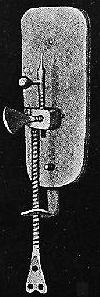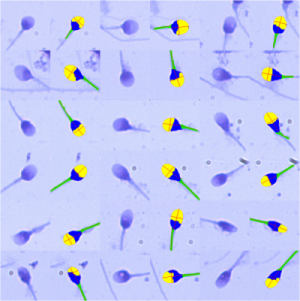Standardization of semen analysis for humans: From 1600’s to current understanding in 2016
For approximately 50 years there have been attempts to standardize human semen analysis. Many researchers, clinicians, scientific bodies/organizations throughout the world have been involved to find semen characteristics that relate to human fertility.
But where did it all start? Anton van Leeuwenhoek and his student Johan Ham were the first to view sperm making use of a primitive microscope in 1677 and they referred to it as little “animalcules”. Spallanzani, 100 years later documented the fertilizing capacity of animal sperm but also worked on human sperm. However, Rudolph Wagner (1837) made one of the first attempts to quantify sperm motility indicating that it was highest at the point of ejaculation and that almost no motile sperm can be extracted from the testis.
Of great significance was the finding by Sims in 1866 that a fertile male can be recognized by the ability of the sperm to pass through cervical mucus. This is still a valid sperm functional test today but shockingly, almost no Andrology lab uses this. Fortunately this test is implemented in Microptic SCA 6.1.
Retzius in the early 1900’s used unique fixation methodology and excellent new developments in microscopy to describe sperm structure of hundreds of species including humans in such remarkable detail that it was only realized with the first electron microscope studies in the 1950’s.
Macomber and Sanders in 1929 showed that a ‘normal’ reference value of above 60 million/mL sperm significantly increases the chances of pregnancy. This value was subsequently lowered to 40 million/mL and it was McCleod in 1951 that showed that this value should be lowered to 20million/mL. The brilliant Swedish Andrologist Rune Eliasson in 1981 even propagated that a person with 5 million/mL should not be declared infertile.
Despite excellent contributions by many andrologists to define fertility of semen parameters over many decades the real first concerted effort to standardize semen analysis came with the first edition of the World Health Organization manual in 1980. This assisted greatly to provide guidelines to standardize semen analysis worldwide. Several editions of the WHO manual followed and currently the 5th edition commonly referred to as WHO5 (2010) is used. What are the major differences among the different WHO versions? The first editions seem to be based on scientists/ clinicians reaching consensus while the 5th edition is more evidenced based.
The sperm characteristic that was most adapted from the first manual to the 5th is sperm morphology and covered the cut-off range 80% to now 4% for normal sperm morphology. This huge difference was based on two basic classification systems – the one is more liberal and followed the MacLeod system and the other the Tygerberg strict criteria. However, it has been subsequently shown to be very subjective. Moreover, it is not only subjective in terms of morphology but for most of the other parameters particularly sperm motility and progressive sperm motility.
With the advent of CASA and in particular the Microptic SCA 6.1 Evolution system, which measures all the important semen parameters in full automatic mode, a high level of objectivity has been attained. Furthermore, it has been shown that CASA is more consistent than manual analysis which is subjective based. Moreover, the author has visited some 40 laboratories worldwide in more than 20 countries and discovered that despite the WHO and ESHRE guidelines there are very poor standardization in terms of many facets such as temperature control and the use of positive displacement pipettes.
It therefore appears that even if embryologists/andrologists all use objective CASA methodology and do not standardize all facets from semen collection to temperature control, to reading motility within one hour and standardize all other aspects it will not improve accuracy of analysis because there are simply too many variables.
Furthermore, Prathimamale et al. (2015) stated: “fertility cannot be determined solely on the result of a semen analysis as there is no evidence stating the exact number and quality of sperm required for a man to be considered fertile”
The question now is what needs to be done in terms of standardization in the Andrology laboratory and actually relating semen/sperm biology to fertility? Two approaches are required:
- We actually need the basic requirement of the basic characteristics of the semen parameters as a basis but then it must be measured objectively and using standardized conditions as alluded above. It is almost like saying if you want to compete in the hundred meters sprint for the Olympics you need both legs and both arms.
- We need sperm functional tests measuring crucial aspects such as sperm cervical mucus penetration, hyperactivation and acrosome integrity and ability to undergo the acrosome reaction. These are the real physiological challenges of sperm en route to the oocyte. This can only be done accurately and objectively with CASA systems such as SCA 6.1 of Microptic. These parameters have shown to relate to the potential to fertilize the oocyte.
In summary we need to realize that whatever we measure we need to standardize each and every step of semen analysis to minimize any variables. We then need to make the paradigm shift to realize that sperm functionality relate to the potential to fertilize the oocyte and existing tests exist using CASA. The door is open and we must use the opportunity to exit from doing only semen analysis to sperm functional testing but with the condition we standardize methodology and analysis tools.








Highly energetic post, I liked that bit. Will there be a part
2?
Thank you!! It’s a great suggestion… we’ll see…
Thank you! Appreciate and believe really important blog. Currently working with Microptic for follow up! Thanks Gerhard
Hi in our lab we are currently using this software. I need to know what kinematic parameters are considered for the Mucus penetration assay. what is the definition? Kindly reply I need this information for publication purposes.
Dear Archana,
Our biologist replied to you by email.
In addition, you can see this video: https://youtu.be/kLSzKSYrqvw
Thank you for your comment! Keep safe.